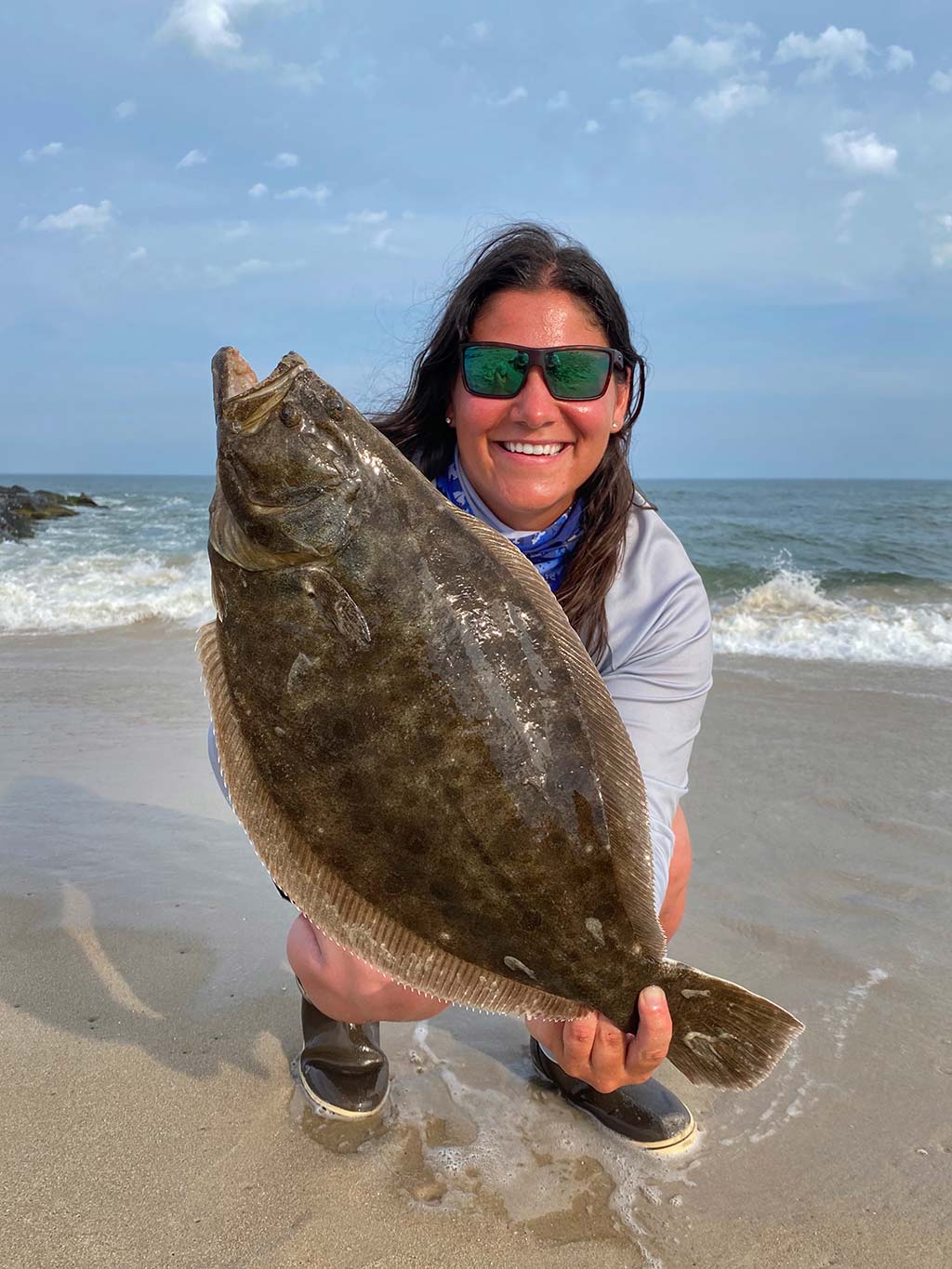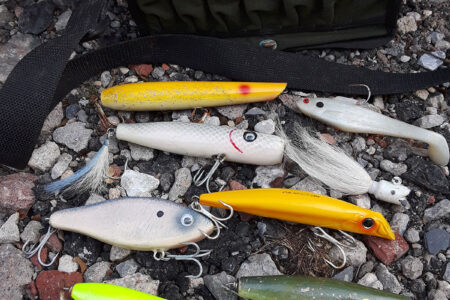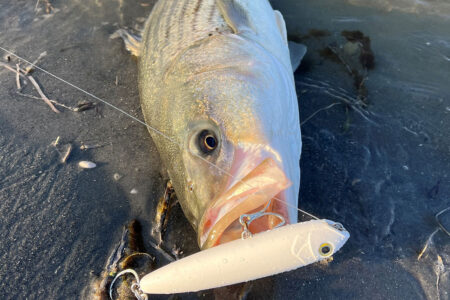Six tips to help you find that doormat you’ve been searching for.
1. Where & When
When it comes down to exactly where to fish, I suggest hitting your local beaches at low tide to get a sense of what the layout truly looks like. Make your way from one end of the beach to the other, mapping out every potential fluke hideout. I find that fishing near any sort of structure or dramatic drop-off yields the best results. Many other species call for different methods that are strictly tide dependent, however in my experience fluke fishing, following the general rule of setting out at sunrise and sunset has worked extremely well for me. While I’m still able to find fish midday and in the afternoon, my keeper ratio is far greater in the early morning and evening.
2. Keep It Simple
Fluke aren’t a complicated species, and your tackle doesn’t have to be either. You don’t need to break the bank to get the job done. Most of the time when I’m surf fluking, I’m using my 9-foot Tica medium-heavy rod, paired with a Daiwa BG 3500 reel, spooled with 20-pound braid. This may seem heavy to some, but this combo is easily my go-to for the surf because it’s so versatile. This setup has no problem with fluke and can easily handle a decent-sized striper or bluefish if I come across a blitz or pod of bunker.
Whether you’re new to the fluking scene, or an experienced angler, the basic hi-lo, or ‘chicken rig’, is an easy and productive rig for anyone to use, and is by far my favorite. It’s simple, super quick to tie, and if you get caught up in structure, you’re not sacrificing any expensive tackle. While these items may seem essential to most anglers, I leave the bucktails, jigs, and bait all behind at home. I use about a 2- to 3-foot leader of 20-pound test mono with a 1- to 2-ounce bank sinker, depending on how rough the surf is that day. I pair my two dropper loops with 5/0 Gamakatsu bait holder hooks and thread my Gulp of choice onto them.

3. Think Big
The number of Gulp options to choose from can be overwhelming, but I’ve found that the 5- and 6-inch grubs work the best. I used to only use the 4-inch Swimming Mullets and found myself catching tons of fish, but the majority of them were small and rarely keepers. Once I switched to the bigger baits, I started to see an increase in the size of fish I was catching. As far as color goes, if I had to choose one to fish with for the rest of my life, it would be ‘pink shine’. I also like to mix in the classics like white, chartreuse, and ‘nuclear chicken’, and on those days when the water quality is mediocre, I’ll use a brighter color like ‘salmon’ so the fish can see it better.
4. Looking Good
Where there’s Fluke, there’s a good chance you may run into other toothy critters who have a knack for biting off your Gulp tails. I always check my setup after every cast to make sure my bait is still intact and looks presentable. Get in the habit of doing this. I can’t tell you how many times I’ve seen anglers go to take their next cast, and their Gulp is hanging on by a thread or completely missing its tail; paying attention to presentation goes a long way.
5. Catch Em’, Cut Em’
A good thing about running into other species while fluking is the opportunity for strip baits. This is another reason why I love using a chicken rig simply because it’s interchangeable. I don’t have to alter anything about my rig if I want to use Gulp or a piece of bait. Almost every time I’m fluking from the surf, I find myself catching kingfish, bluefish, and the occasional sea robin. These are perfect to quickly fillet up and cut into strips to try something different to get the fluke to eat.
6. Retrieve
Once you cast out and feel that you’re on the bottom, you want your bait to slightly flutter on and off of it by constantly jigging and twitching it. Usually, I start with a slower retrieve and jigging style and begin to speed it up periodically until I find the perfect balance that’s getting the most bites. You’ll start to get a feel for the bites and be able to tell when it’s a good one to swing on. Fluke are aggressive and hit very quickly, so when I feel a ‘thump’ or heavy weight on my line, I immediately set the hook.
A huge misconception when fishing, in general, is the idea of having to cast as far as you possibly can. A lot of times, these fish are hanging out right in the wash. My personal best off the surf just shy of 6 pounds was sitting about 10 feet in front of me.
The great thing about fishing from the surf is your freedom to stay on the move. Surf fishing in general is a grind and truly comes down to patience, but if you keep putting your time in, you’ll eventually find that doormat you’ve been searching for.





